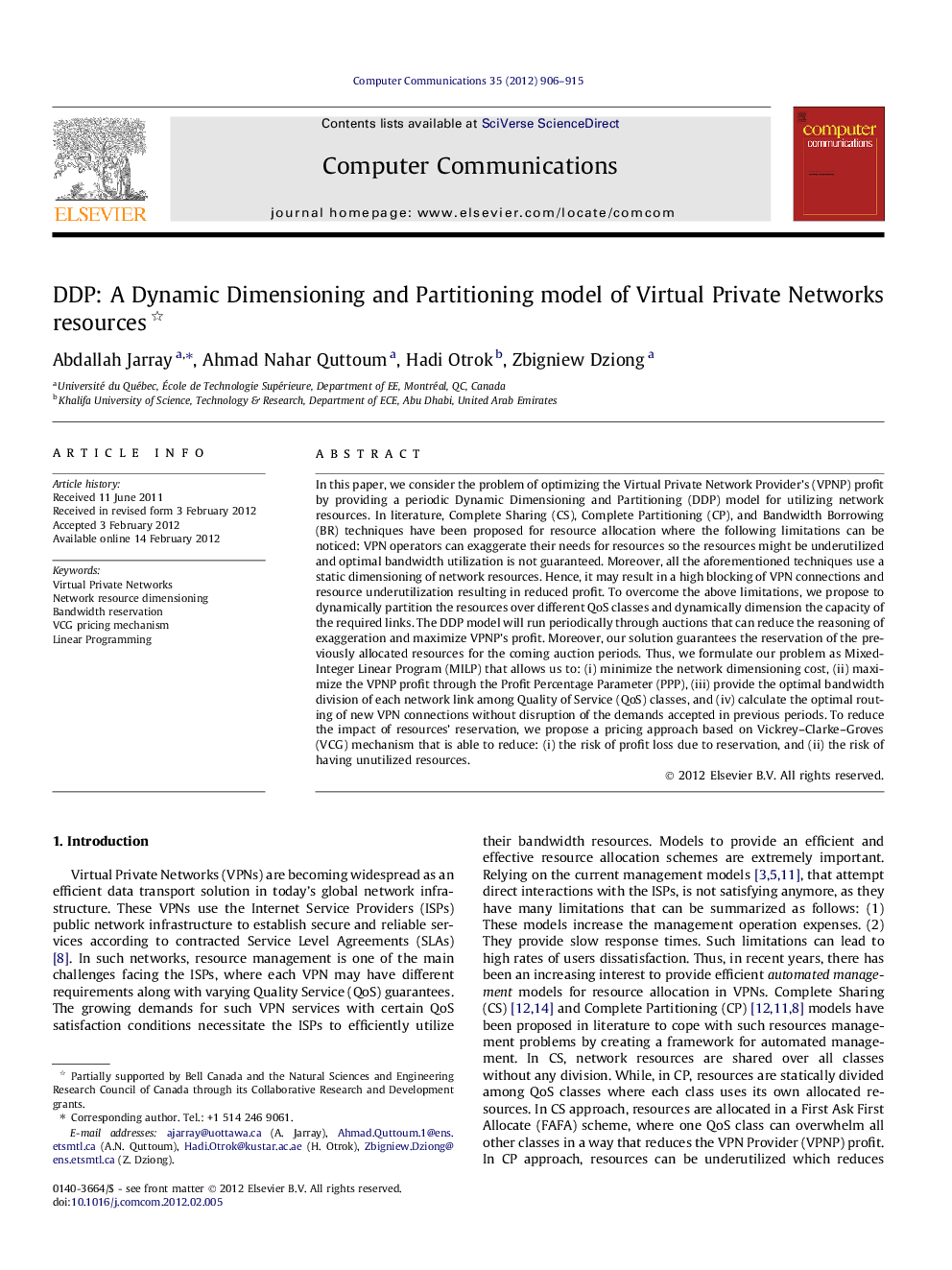| کد مقاله | کد نشریه | سال انتشار | مقاله انگلیسی | نسخه تمام متن |
|---|---|---|---|---|
| 448680 | 693591 | 2012 | 10 صفحه PDF | دانلود رایگان |

In this paper, we consider the problem of optimizing the Virtual Private Network Provider’s (VPNP) profit by providing a periodic Dynamic Dimensioning and Partitioning (DDP) model for utilizing network resources. In literature, Complete Sharing (CS), Complete Partitioning (CP), and Bandwidth Borrowing (BR) techniques have been proposed for resource allocation where the following limitations can be noticed: VPN operators can exaggerate their needs for resources so the resources might be underutilized and optimal bandwidth utilization is not guaranteed. Moreover, all the aforementioned techniques use a static dimensioning of network resources. Hence, it may result in a high blocking of VPN connections and resource underutilization resulting in reduced profit. To overcome the above limitations, we propose to dynamically partition the resources over different QoS classes and dynamically dimension the capacity of the required links. The DDP model will run periodically through auctions that can reduce the reasoning of exaggeration and maximize VPNP’s profit. Moreover, our solution guarantees the reservation of the previously allocated resources for the coming auction periods. Thus, we formulate our problem as Mixed-Integer Linear Program (MILP) that allows us to: (i) minimize the network dimensioning cost, (ii) maximize the VPNP profit through the Profit Percentage Parameter (PPP), (iii) provide the optimal bandwidth division of each network link among Quality of Service (QoS) classes, and (iv) calculate the optimal routing of new VPN connections without disruption of the demands accepted in previous periods. To reduce the impact of resources’ reservation, we propose a pricing approach based on Vickrey–Clarke–Groves (VCG) mechanism that is able to reduce: (i) the risk of profit loss due to reservation, and (ii) the risk of having unutilized resources.
Journal: Computer Communications - Volume 35, Issue 8, 1 May 2012, Pages 906–915